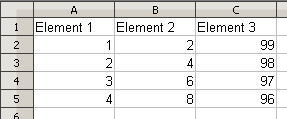


The example in the Gist and Codepen should be fairly easy to modify and add extended functionality if you wanted. If you need to read the JSON from a file (as indicated by your inclusion of the filename response.json in your post), you will require the Node. I put together my own working version by combining a couple of Stack Overflow answers modifying them slightly to fit most basic use cases. Show 2 more comments 10 Three easy steps: Read. After searching Stack Overflow, various blogs and npm packages, I couldn’t find a reliable solution from one source that just worked in the browser and didn’t rely on server-side processing of any kind. The following steps convert a JSON string to a CSV file using Python: Import Pandas Import Pandas using import pandas as pd Load the JSON string as a Pandas DataFrame Load the DataFrame using pd. Recently I needed to create this functionality for a project at work. My suggestion is to test the below code with your source data and if you are sure that it will always have that set of characters, then use the below code for your project. I’m sure there are more cases but as this isn’t a fully fledged library I haven’t felt the need to make the code bullet-proof. If a field contains non-English characters such as Persian characters etc If a field contains a new line symbol (e.g. If a field contains the quote symbol (e.g. It wont block the calls, the aggregate function will not wait for the callback to complete. We can handle such JSON with much ease using the pandas library. Update 5: A couple of readers have posted in the comments about the flexibility of this code in the following scenarios: CSV output for Code Block 2 The above two examples are good when we have a single level of nesting for JSON but as the nesting increases and there are more records, the above codes require more editing. Each subsequent row is a record and should have the same number of fields.

The first line is often the header, or column names. The CSV format is documented in an RFC memo RFC-4180. Var result = converter.Export JSON to CSV file using Javascript (in the browser) Often used as an interchange data format to represent table records, one per line. Also, I already ran npm install json-2-csv and checked my package.json to see if its there (version 3.5.4) let converter = require('json-2-csv') Here's the code that I tried with the test data. We use JSON to represent a variety of object structures, including ones that contain arrays and nested objects We use CSV to represent data from a list of objects, with each object from the list appearing on a new line This means that if our JSON document has an array of objects, we can reformat each object into a new line of our CSV file. JSON and CSV are two different data formats. But when I follow the docs and try and use it I get undefined as my result. I'm pretty new to nodeJS so maybe I'm doing something wrong but I'm trying to use the node module json-2-csv.


 0 kommentar(er)
0 kommentar(er)
